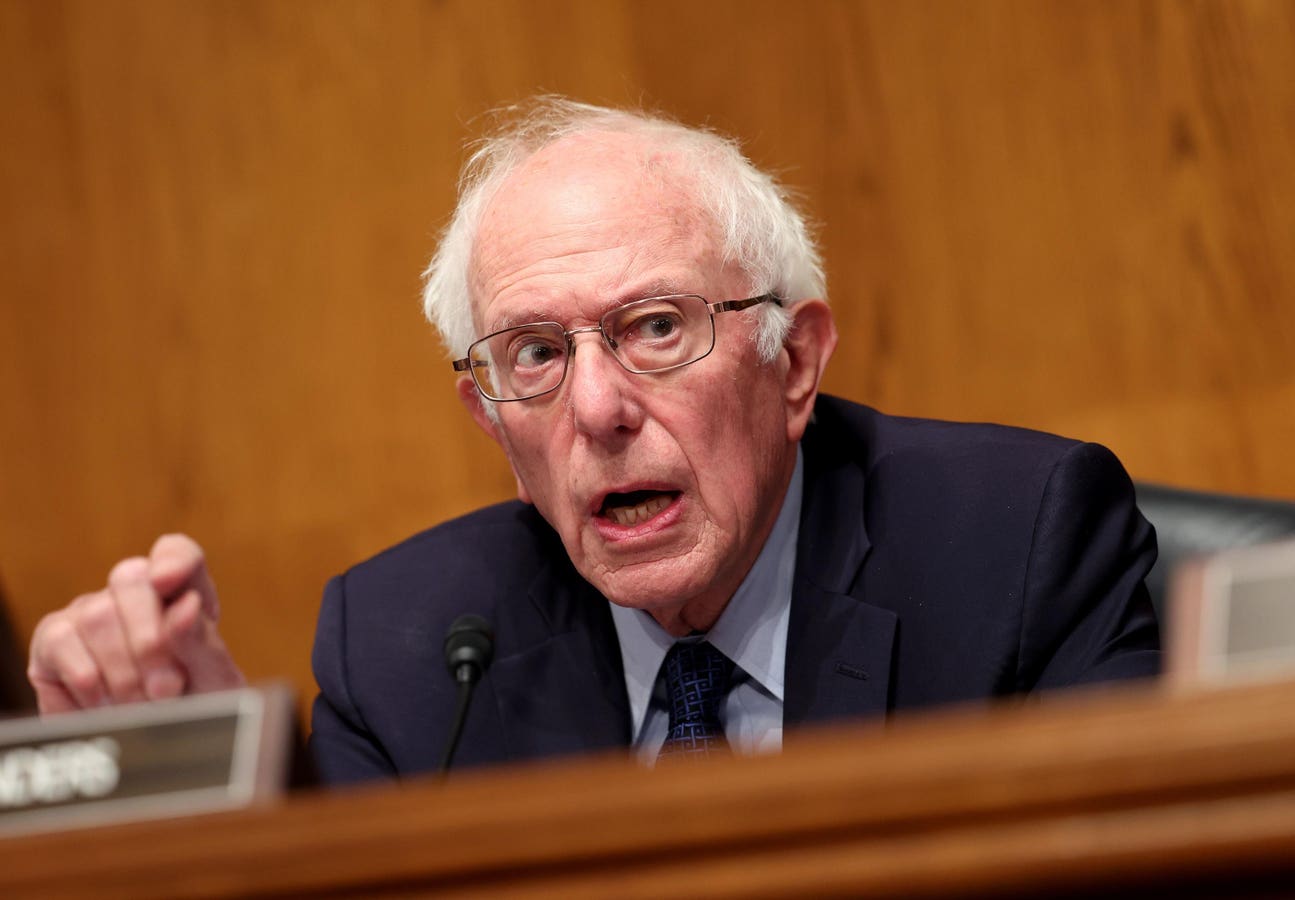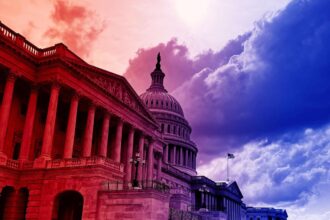America’s retirement and elder poverty crisis is painful, frightful, and undeniable—yet some experts are denying there is a retirement income security crisis and trying to persuade us there’s nothing to worry about. We wish that were so, but the numbers tell us there is a quite serious retirement crisis.
Numbers Show Retirement Crisis
- Nearly half (44%) of all American households with members aged 55-64 have no savings at all and will have to rely entirely on Social Security.
- Roughly 52 percent of Americans 65 and older “are living on less than $30,000 annually, and one in four survive on less than $15,000 per year,” according to Census data cited in Senator Bernie Sanders’ report on retirement.
- Nearly 17 million older Americans aged 65 and up are financially insecure, below 200% of poverty — that’s nearly one-third; more than 10 percent are in poverty, Census data show.
Unfortunately, it’s not going to get any better because workers do not have good ways to save for retirement. 57 million working Americans do not have a way to save for retirement easily out of their regular paycheck.
The kinds of retirement accounts people get now are lower quality. The Congressional Budget Office (CBO) found the shift from defined benefit to defined contribution plans may explain about one-fifth of the increase in wealth inequality from 1989 to 2019.
More than 27.2 million workers participated in defined benefit plans in 1975, versus 11.2 million workers participating in defined contribution plans. In 2019, 85.5 million workers participated in defined contribution plans versus 12.6 million defined benefit plan participants. In 1983, 31% of Americans were at risk of not being able to maintain their standard of living in old age. In 2022, that number rose to 39%.
Do you think people working longer will save us from more hardship in old age? Depending on people working longer to avoid the crisis ignores the realities of age discrimination, economic dislocation, and skills obsolescence, all of which can prevent many older Americans from finding decent work when they need it. Most people retire before they wanted or were ready to because of layoffs and poor health, research shows.
Nearly half of middle-class workers nearing retirement will be downwardly mobile into poverty or near poverty, our research shows. The bulwark of middle-class workers have, sadly, a good chance of becoming a poor elder.
People Tell Us There Is A Retirement Crisis
Most people in a Federal Reserve survey said they are not ready for retirement. When asked, “Do you feel your retirement savings plan is currently on track?” more than half of people aged 55-64 say “no.” When asked, “How much money do you have saved for retirement?” 45% report having less than $100,000, while 28% have more than half a million dollars; it’s a tale of two retirements.
According to the National Institute on Retirement Security, “When asked if the nation faces a retirement crisis, 79 percent of Americans agree there indeed is a retirement crisis, up from 67 percent in 2020. More than half of Americans (55 percent) are concerned that they cannot achieve financial security in retirement.”
Why Do Some Experts Insist There Is No Retirement Income Crisis?
You have to ask: why would anyone want to undermine our awareness of — and attempts to address — a serious crisis faced by millions of older Americans?
Last Friday, in a regrettable and frankly puzzling attempt, given the facts, Andrew Biggs, senior fellow with the American Enterprise Institute, accused Senator Sanders of misrepresenting the retirement crisis. To make his case, Biggs — who has a long history of downplaying the crisis and promoting privatization of Social Security — used misleading numbers of his own.
Biggs insists there is no retirement crisis because, according to his numbers, among 55 to 64-year-olds in 2022, 58 percent reported having retirement savings in an ordinary taxable investment or savings account, 14 percent owned real estate, and 19 percent owned a small business that could generate retirement income. But we checked Biggs’ numbers with the 2022 Federal Reserve data and found only 9 percent of Americans ages 55-64 answered “yes” to whether they “own a business or real estate that will provide income in retirement.” And the bulk of those real estate and business assets are owned by the top 10%, while most in the bottom 90% have minimal if any of these assets to draw from in retirement.
Crucially, Biggs misleads because he reports average values of people’s assets, and averages can be artificially pulled up by a few very wealthy people. The typical American nearing retirement has insignificant wealth in checking accounts, business equity, or real estate. Look at these numbers from the 2022 Federal Reserve Survey of Consumer Finance:
· In the bottom 50% of the wealth distribution, people nearing retirement have hardly anything in their non-retirement accounts – $56,000 in housing equity and $0 (zero) in business assets.
· The middle class, the next 40 percent of households, have much less than Biggs implies, with $0 (zero) in business wealth and $315,000 in home equity. If they sell their home, that $315,000 would generate about $1900 per month and that would need to pay for housing – not a comfortable retirement.
· Even among the top 10%, median business wealth is zero. This is because less than half of households (46%) in the top 10% have any business equity at all.
· Biggs got one point right. He correctly claims that tallying retirement accounts leaves out the small numbers of workers who only have a defined benefit (as opposed to those who also have a retirement account). These people have more income than captured by that one number. But sadly, this group is quite small – just 11 percent of retirees have any DB plan at all.
Republicans’ Dangerous Agenda To Cut Social Security
Regrettably, Biggs joins the Republican Study Committee (RSC) in denying older Americans’ financial fragility. Last week, the RSC proposed cutting Social Security and Medicare.
Why would they do this? Republicans are pushing to raise the full Social Security age even higher than the current age 67 – a dangerous and harmful step. Biggs has a long history of attempting to undermine Social Security. In 2006, President George W. Bush nominated Biggs — “a zealous advocate of privatizing Social Security” — as deputy commissioner of the Social Security Administration to help shepherd privatization efforts. Biggs had already helped design privatization proposals for the Bush administration while at the Cato Institute in 2005. More recently, in confirmation hearings as President Biden’s nominee for the Social Security Advisory Board (SSAB), Biggs opposed lifting the payroll tax cap on the super-wealthy, which starves Social Security of revenue needed to pay full benefits in 9 years.
Sanders Is Right: America’s Elders Face Higher Poverty
Senator Sanders’ point is straightforward and urgently important. The U.S. has sky-high elder poverty rates that won’t get better unless Congress acts. The elder poverty rate has been stubbornly steady at around 10 percent over the past 30 years, and rose from 8.9 to 10.2 percent from 2020 to 2022. By international standards, the U.S. has the highest elder poverty rate among the world’s wealthiest nations – by far. Getting closer to the facts gets us closer to solutions. Attempting to undermine those solutions only makes America’s retirement and elder poverty crisis worse.
In the recent Senate hearings he spearheaded on the retirement crisis, Sanders asks why the US is one of the richest countries in the world while our seniors are among the world’s poorest. That is a vital question and answering it will help us create a more secure, sustainable, and dignified future for America’s growing elderly population. Haven’t they earned at least that after a lifetime of hard work?
My team at the The New School — Christopher D. Cook, Karthik Manickam, Drystan Phillips, and Jessica Forden — helped assemble facts used to consider and confirm the existence of a retirement crisis for this article.
Read the full article here










